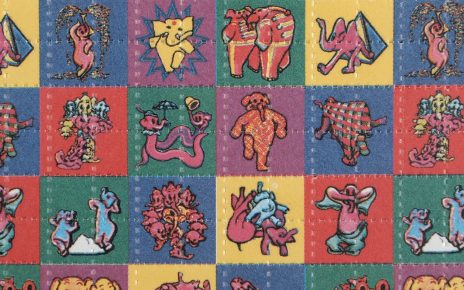Against the persisting backdrop of COVID-19, the killing of George Floyd and subsequent protests against police brutality, definitions of “health care” have become muddled in crisis and chaos. Coronavirus and state-sanctioned violence have collapsed the role of “physician” to move beyond medicine and include public health, public safety and politics.Lines between medicine and politics have blurred in the past, often in academic medicine and in medical schools, like the American College of Physicians’ paper against gun violence, or the #ThisIsMyLane hashtag, and medical students’ “die-ins” in the 2014 Black Lives Matter demonstrations.
What does it mean to be an incoming medical student today? As I social distance in New York, after experiencing the final weeks-cum-graduation of my dual masters in narrative medicine and creative nonfiction turn entirely virtual, I ask myself what starting medical school during a global pandemic looks like. It has become clear, in 2020, that there is no apolitical medicine, thus the role of a medical student entering health care is critically important to consider.
Until COVID-19, I thought of the role of a physician as one that was inherently just and simple; treating symptoms, preserving autonomy and honoring will. This was instilled in me 12 years ago when I experienced my first death. My grandfather had passed away after an aggressive esophageal carcinoma spread to multiple organs like marbles on a tile floor. Despite his immense pain, he passed peacefully under palliative care. I remember feeling his skin under my hand, smooth under my fingertips, powdery from the foundation the mortician applied, stiff and serene like marble. He seemed at ease, still himself.
I remember driving after the car carrying the casket to the crematory, a common ritual in Japan, and then watching the casket enter the furnace, the flames consuming the wood and then the body. He came out on a cold metal bed as a skeleton. My family surrounded him there, collecting his bones with chopsticks into urns. I was 13, but I knew then what it meant to succumb to illness, and I knew then what it meant to live and die with dignity.
I carried this memory with me, through college and graduate school, hoping to do justice to patients with end-stage cancer. But in the face of recent events, the illusion of neutral or apolitical medicine has been shattered, or rather, altered entirely.
POLITICAL MEDICINE
Medical education, from as early as an undergrad premed curriculum to clinical training, often operates under the veil of apoliticism. Indeed, “do no harm” would suggest that a formal political affiliation may call into question the ethics and efforts around a physician’s decisions or abilities to treat patients without discrimination. My premed professors rarely spoke about the downstream effects of health policy, or lack thereof, and conversations around political decision-making in medicine were largely kept to courses outside of the standard curriculum.
Perhaps it is because of this elision that when political movements do sweep through hospitals, it becomes impossible to ignore. I remember scrolling through my social media, invigorated and inspired by the 2014 die-ins or the 2018 #ThisIsMyLane movement in response to gun violence, especially as they gained momentum in academic institutions and caught the eyes of mainstream media. In spring 2020, #HealthCareHeroes sparked groups of health care workers to speak against the superficial lionization and praise in the face of continuing PPE shortages. In summer 2020, medical students, doctors, nurses and EMTs continue to kneel in solidarity with protestors fighting the country’s epidemic of police brutality and disproportionate Black suffering.
The reality is that medicine has always been political, prioritizing certain bodies over others. COVID-19 shows staggeringly high mortality rates among African American, Native American and Latinx populations.Immigrant physicians, who constitute a quarter of America’s licensed clinicians, have faced a threat of deportation in the case of COVID-19-related disability or death. As an international student, I cannot protest and join the national outpouring of grief and rage for fear of arrest and visa revocation. On July 6, Immigration and Customs Enforcement (ICE) declared that international students whose education is solely online could not remain in the U.S.; though the agency rescinded that order after an outcry, the moment leaves me painfully aware of my nonessentiality to the federal government, despite years of serving the country’s most vulnerable in public hospitals, free clinics and correctional facilities.
I am honored to formally enter medical training despite these barriers, but continue to worry about the implications of becoming yet another precariously placed noncitizen physician on a visa. As an incoming student, I cannot offer medical advice or reallocate financial resources to adequately support local groups in need. I have been trained to study stories in medicine to illuminate disparities, to amplify vulnerable voices and to think about, and radically imagine, the role of clinicians in society through narrative medicine. I come equipped with linguistic tools, but I am entering medical school under unprecedented circumstances. And so, I ask myself what it means to be a doctor today, and what the contours of “caregiving” really are.
STRUCTURAL THINKING
In a recent viewpoint article in the Journal of the American Medical Association, Jonathan Metzl of Vanderbilt University and colleagues wrote: “The US response to the COVID-19 pandemic has thrown into stark relief the need for medicine to have an explicit political voice.” Medicine, and future physicians, need a political voice to defend vulnerable communities experiencing disproportionate suffering regardless of cause; coronavirus and police brutality lead to death, both under the purview of medical care. I am lucky to join a medical school that mailed copies of Harriet Washington’s Medical Apartheid for our summer reading, weeks before George Floyd was killed and the political landscape altered. But I am not convinced that all medical schools are willing to look back to the racism in U.S. medical history and acknowledge that history to understand medicine’s current state. Hundreds of medical students are starting antiracist initiatives, but these efforts to abolish racially biased diagnoses and fundamentally change perceptions of race in medicine require institutional support; especially to promote such thinking upstream, against hierarchical professional relationships embedded in the system itself.
The concept of structural competency propounded by Metzl with Helena Hansen of New York University asks that future physicians be taught to recognize upstream causes of illness. COVID-19 has revealed the ways federal resource allocation and support is necessary to adequately prepare for disasters and epidemics, and properly respond when they come. COVID-19 shows that racial minorities have significantly higher mortality, as with many illnesses, and access to testing, contact tracing and care need addressing at the structural level. Police violence, too, requires health professionals to reenvision new, just and more effective ways of investing in community care and health education, while protecting those who are unequally surveilled and harmed. While medical schools have implemented courses that focus on sociocultural determinants of health, structural competency zooms further out, encouraging clinicians to not only treat patients, but to understand that social and economic inequities, bias and discrimination affect a person’s health long before medical intervention.
Increased diversity training and seminars on institutional racism are not enough to drive actionable change. Online video tutorials do not actively engage participants to reflect and alter behavior, just as increased bias training for police officers did not prevent the deaths of unarmed Black boys or innocent Black men. I am not convinced that current medical education folds structural competency into its foundational core and creates portals for fostering physicians who are well-equipped and well-supported—financially, socially, and academically—to reimagine health care by prioritizing communities, education, and policies that determine downstream ill-health, pain, and suffering. Perhaps forced online learning during COVID-19 brings an opportunity to rethink methods for incorporating structural competency training in health care at large.
Beyond structural competency, we must also look to medicine’s history to understand this racialized reality in a broader context. Harriet Washington’s scholarly collage offers a rich and nuanced history of medical experimentation on African American communities, from pre-Civil War era to present day. Perhaps the most effective element of her book is the constant reminder that the infamous Tuskegee Syphilis Study is only one historical episode, albeit tragic and morally reprehensible, and that countless other experimentations have gone unnoticed or been forgotten.
The eugenics control of African American reproduction, lethal plutonium injections in African American men, XYY studies on boys from impoverished families to test for criminal behavior and violence, and abusive prison research on incarcerated persons all help contextualize the long history of prejudiced political medicine. Assigning Medical Apartheid to all incoming medical students may be a start, but it is also likely that young medical students are already willing to embrace such narrative material. We must implement such educational programs for trainee clinicians and practicing physicians, and regularly revisit these histories so they become an integral part of clinical practice—not a humanities supplement.
ACTING IN THE NOW
When I opened the summer reading package from my medical school and realized this book had been assigned with a series of thoughtful questions for orientation small group discussion, I was relieved that it was a genuine learning opportunity, rather than virtue signaling. But I am still not convinced that medical education across the country is doing the most it possibly can to prevent vulnerable communities from carrying the burden again and again. Even if the protests against state violence motivate schools and hospitals to incorporate antiracist training, structural change takes time. So, I ask myself what I can do for medicine. How can I hold myself accountable to the responsibilities of care, safety and justice when those structures are not yet secured in place?
The definition of “doctor” morphs with each protest and coronavirus peak. The harder I think about what it means to be a socially just, structurally competent doctor, the more I become overwhelmed with the responsibilities of providing quality care and living up to the high moral standards of community investment and education. I realize the only thing I know for certain is that the contours of “doctoring” are changing constantly. And that constancy of inconstancy is perhaps what I need to embrace right now. Progress is not linear.
It is exciting and overwhelming to be entering medicine today. Seeing medical students graduate early to be deployed to makeshift ICUs, watching doctors and nurses make their own PPE, reading accounts of physicians at the frontlines, seeing health care workers take to the streets and say the names of Ahmaud Arbery, Breonna Taylor, and George Floyd; I am not just entering medical school, I am entering a movement at a moment of change.
Thus, I return to asking myself what it means to be an incoming medical student, and what it is that I desire in my profession: I want to treat patients with humility. I want to be able to send a homeless patient to a shelter with a guarantee for food and bed space after treating his symptoms. I want to screen and detect cancer earlier in incarcerated individuals, and provide proper treatment and ample support so they can healthily reintegrate into society. I want to better understand the economic complexities of food deserts so structural intervention becomes a normal part of medical discourse. I want universal health care.
I realize that entering medicine on the clinician side of the story means carrying the responsibility to elevate voices that are rendered voiceless: unheard, undervalued, or ignored. Medicine is in the throes of debating what “our lane” is, and young physicians must be trained to distinguish that lane and speak up for those who cannot. Universal health care is certainly our lane, as is addressing health inequity, access to care, and preventing clear seeds of suffering from taking root.
Beyond reading antiracist texts and discussing them in health humanities curricula or holding antiracist film clubs we, as medical students, must use structurally competent lenses for viewing illness and health, utilize our mobility and collectivity to invest in local communities and establish longitudinal relationships, effectively use social media to correct misinformation spread and direct individuals to reliable sources, commit to elevating public information and community intelligence, and become self-critical, problematizing learners. It is too late to encounter antiracist texts in medical school, we must intercept earlier, foster equality sooner.
Scholarship is essential for understanding history and embracing an antiracist stance, but we cannot confuse heightened intellectual engagement with advocacy or action. We must broaden our scope, but also move beyond a metaphorical “our lane” if we are to incite sustainable change. We are the next generation of caregivers and one day we will be at the forefront of a public or global health crisis. This is not an exercise of imagination; this is necessary experience.
What does it mean to be a doctor today? What are the concrete steps we can take to move beyond reimagining an improved health system, and bring those visions to life? We must hold ourselves accountable, recognize we are a central and essential part of health care discourse, and collectivize to become a powerful political force. I am ready and excited to stand beside you to build a better future.




